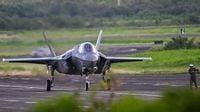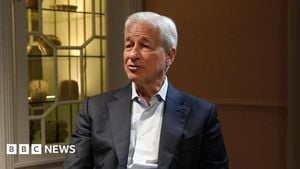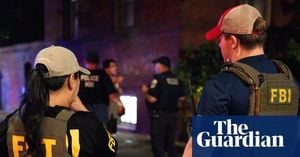In a dramatic escalation of tensions in the Caribbean, the United States has deployed a formidable naval force to the region, targeting drug trafficking operations but raising fears of broader conflict with Venezuela. The deployment, which began in August 2025, now includes four destroyers, one cruiser, a nuclear-powered attack submarine, a landing helicopter dock, two amphibious vessels, and a special operations platform, making up more than 10 percent of all deployed U.S. naval assets in the U.S. Southern Command (SOUTHCOM) area of responsibility, according to the Center for Strategic and International Studies (CSIS).
Since the first warships entered the Caribbean, the U.S. military has carried out at least four lethal strikes against boats it claims were involved in drug trafficking in international waters, resulting in the deaths of at least 21 people. These operations, which the Trump administration asserts are part of an ongoing “noninternational armed conflict” against drug trafficking groups now designated as foreign terrorist organizations, have already drawn sharp criticism and prompted an international diplomatic response.
On October 9, 2025, Venezuela formally requested an emergency meeting of the United Nations Security Council, decrying what it described as “mounting threats” from the United States. The Venezuelan foreign ministry stated that the recent U.S. strikes “endangered peace, security and international and regional stability.” The UN meeting, scheduled for October 10 at 3 p.m. in New York, was backed by Russia and China, both of whom hold veto power on the council, according to AFP reporting.
President Donald Trump has notified Congress that the United States is engaged in “armed conflict” with drug cartels, asserting legal authority for the deadly strikes. In a letter to lawmakers, Trump described the military actions as necessary to combat the flow of drugs into the United States. The U.S. military claims that the boats bombed off the coast of Venezuela were carrying narcotics destined for American shores. However, as reported by AFP, most illegal drugs entering the U.S. originate in, or are shipped through, Mexico, raising questions about the focus on Venezuela.
Amid these developments, the United States has made Venezuela the focal point of its fight against drug trafficking. The U.S. accuses Venezuelan President Nicolás Maduro of leading a major drug cartel—specifically, the “Cartel of the Suns,” which the U.S. Treasury Department has designated as a Specially Designated Global Terrorist group. In social media statements, Trump and his administration have also linked Maduro to the Tren de Aragua criminal network. The U.S. does not recognize Maduro as Venezuela’s legitimate leader, alleging that he fraudulently retained power after the 2024 elections. Maduro, for his part, contends that the true aim of the U.S. campaign is regime change.
The heightened U.S. military presence in the Caribbean is not merely symbolic. In addition to the naval armada, the United States has deployed F-35 warplanes to Puerto Rico, further underscoring the island’s strategic importance. Puerto Rico has emerged as a critical node for U.S. power projection in the Western Hemisphere, providing key infrastructure such as the Port of Ponce for warships and National Guard facilities at Luis Muñoz Marín International Airport for navy reconnaissance planes like the P8-A Poseidon, as detailed by CSIS analysts.
To support the current operations, the United States has even reopened the former Roosevelt Roads Naval Station in Ceiba, Puerto Rico, which had been closed for more than two decades. This move reflects the pressing need for forward-positioned logistics and basing infrastructure, as the U.S. military seeks to sustain its presence in a region where it otherwise has limited permanent facilities—only Naval Station Guantánamo in Cuba and Soto Cano Air Base in Honduras serve as year-round overseas bases for SOUTHCOM.
Recent U.S. supply and logistics operations on Puerto Rico, coupled with reports of U.S. forces training in the waters off Trinidad and Tobago, suggest that military activity in the Caribbean is likely to intensify in the near term. The forthcoming 2025 National Defense Strategy is expected to emphasize the Western Hemisphere and homeland security, potentially making the current deployment the new normal for U.S. military posture in Latin America and the Caribbean.
However, the build-up has not gone unnoticed by U.S. adversaries. Several U.S. naval ships have docked at ports operated by Chinese-influenced companies in Mexico and Panama, raising concerns about intelligence vulnerabilities. For instance, the Arleigh Burke–class destroyer USS Sampson docked at Manzanillo, Mexico, where a Hong Kong–based conglomerate operates a terminal, while the USS Lake Erie called at the Hutchison-operated Port of Balboa in Panama. These port calls could provide opportunities for China to gather intelligence on U.S. naval movements and operating procedures, a risk that analysts warn could have implications for U.S. operations elsewhere, such as the Indo-Pacific.
Within Venezuela, the government has responded to the perceived threat by mobilizing thousands of civilians into a militia, following President Maduro’s call to bolster the cash-strapped country’s defenses. The move comes as Caracas faces severe economic hardship and international isolation, having severed diplomatic ties with Washington in 2019.
While the Trump administration has reportedly prepared strike packages for potential operations within Venezuelan territorial waters or even on land, these plans remain under presidential review, and it is unclear whether the United States is prepared to launch a full-scale military campaign against the Maduro regime. As CSIS analysts Henry Ziemer and Ryan C. Berg note, the current U.S. force posture is sufficient for precision strikes from a safe distance—potentially even while ships are docked in Puerto Rico—but falls short of what would be required for sustained combat operations in a territory as large and complex as Venezuela.
The lack of robust basing infrastructure in the region also creates logistical challenges for the United States, making sustained operations difficult without further investment. While Puerto Rico has proven invaluable as a staging ground, expanding operations deeper into South America would require additional resources and clear strategic guidance. The possibility of leveraging Trinidad and Tobago for operations, perhaps through an updated status of forces agreement signed in late 2024, could help address some logistical hurdles, but such arrangements remain in their infancy.
At the heart of the current standoff are competing narratives about the true purpose of the U.S. deployment. While Washington insists its actions are aimed at disrupting drug trafficking networks that threaten American security, Caracas and its allies argue that the real goal is to destabilize and ultimately overthrow the Maduro government. As the United Nations Security Council convenes to address Venezuela’s concerns, the world is left to wonder whether the Caribbean is on the brink of a larger conflict—or whether diplomatic efforts can defuse a crisis that has already claimed lives and rattled the region.
For now, Puerto Rico’s reemergence as a strategic military hub underscores how old dynamics in U.S.-Latin American relations are being revived in a rapidly changing global security environment. The decisions made in the coming weeks could have lasting consequences for the balance of power—and the prospects for peace—across the Western Hemisphere.




